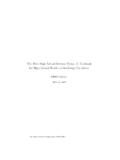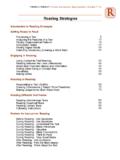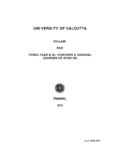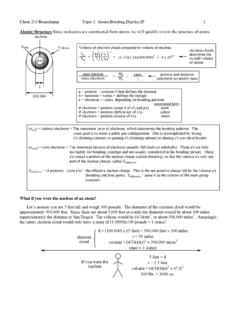Transcription of Imaging Spectroscopy Using Tunable Filters: A …
1 Imaging Spectroscopy Using Tunable Filters: A ReviewNahum GataOpto-Knowledge Systems, Inc. (OKSI), Torrance, spin-offs from NASA s multi- and hyperspectral Imaging remote sensing technology developed for Earthresources monitoring, are creative techniques that combine and integrate spectral with spatial methods. Suchtechniques are finding use in medicine, agriculture, manufacturing, forensics, and an ever expanding list of otherapplications. Many such applications are easier to implement Using a sensor design different from the pushbroom orwhiskbroom air- or space-borne counterparts.
2 This need is met by Using a variety of electronically Tunable filters thatare mounted in front of a monochrome camera to produce a stack of images at a sequence of wavelengths, formingthe familiar image cube . The combined spectral/spatial analysis offered by such image cubes takes advantage oftools borrowed from spatial image processing, chemometrics and specifically Spectroscopy , and new custom exploi-tation tools developed specifically for these applications. Imaging Spectroscopy is particularly useful for nonhomogeneous samples or scenes. Examples include spatial classification based on spectral signatures, use of spectrallibraries for material identification, mixture composition analysis, plume detection, etc.
3 This paper reviews availabletunable filters, system design considerations, general analysis techniques for retrieving the intrinsic scene propertiesfrom the measurements, and applications and examples. Keywords: electronically Tunable filter ; hyperspectral; multispectral; true color vision; medical Imaging ; precisionagriculture; archaeology; art restoration; target detection; image understanding; plume detection. image cubes are analogous to a stack of pictures of an object, a sample, or a scene, where each image isacquired at a narrow spectral band. Each pixel in the image cube, therefore, represents the spectrum of the scene atthat point, Fig.
4 1. The nature of imagery data is typically multidimensional, spanning three spatial, one spectral, andone temporal Each point in this multidimensional space is described by the intensity of the radiancewhich is emitted, reflected, or a combination of both (depending on the phenomenology under investigation). Sincedetector arrays in image capture devices are two dimensional at most, they can only capture two dimensions of thedata at one time, and another dimension displaced in time. In mobile applications ( , air- or space-borne, or amoving web or a conveyor belt) a sensor builds an image cube (x-y- dimensions) in a pushbroom fashion, bycapturing typically one spatial and the spectral dimensions in each camera frame, while the second spatial dimensionis captured displaced in time.
5 In stationary applications ( , a sample under a microscope) it is possible to capturetwo spatial dimensions in each camera frame, while the spectrum axis is displaced in (For rapid time-varyingevents, other techniques allow the construction of sensors that capture the three x-y- dimensions in a single cameraframe.) Capturing image cubes in stationary applications can be accomplished by swapping narrow band pass filtersin front of the camera lens, but a more elegant, convenient, and versatile solution is afforded by the use of electroni-cally Tunable filters (ETF).
6 A) Correspondence: E-mail: ; phone: 310/371-4445 x237; Fax 310 1. Image cube obtained with a liquid crystal Tunable filter ; providing high spatial resolution of spectral FILTERS (TF) filter propertiesA TF is a device whose spectral transmission can be electronically controlled by applying voltage, acoustic signal,etc. An ideal Tunable filter would possess the attributes listed in Table 1. In practice these attributes are only met toa limited degree and each TF technology presents advantages and disadvantages. Hence, each application shouldcarefully consider the tradeoffs.
7 And as shown below, users must develop working solutions that capture the bestattributes of a technology, and overcome other limitations. Random access to wavelengths Perfect MTF Constant bandpass Selectable bandpass Large aperture Polarization insensitive Top hat band pass curve (see Fig. 2) Low power consumption Infinite spectral range Minimal physical thickness Insensitive to angle of incidence of the incoming light (wide FOV) Minimal out-of-band transmission Insensitive to environment ( , ambient temperature, humidity) Minimal tunability timeTable 1: Ideal Tunable filter tunability can be achieved in a number of ways.
8 We discuss ETFsusing examples of current and upcoming devices. To fully characterize thespectral transmission of the TF, the transmission over the complete spectralrange of interest needs to be characterized when the filter is tuned to a seriesof spectral positions. The TF performance is described by a matrix A = (ai,j)of L K elements, where L transmission curves are measured, each at Kwavelengths, where typically K>>L. Further quantitative details arediscussed below, after a brief review of some Tunable filter examplesWe discuss three classes of ETFs: liquid crystal devices based on birefrin-gence, acousto optical devices based on diffraction, and briefly also mention the more well known interferometertype filters.
9 Liquid crystal Tunable filter (LCTF): A Lyot-Ohman3. (or birefringent)4. filter , Figs. 3and 4,5. is built Using a stack of polarizers and Tunable retardation (birefringent) liquidcrystal plates. The transmission of successively thicker retardation plates is shown in as curves a,b,c, etc. The transmission ofthe complete system comprising the stack isshown by the bottom curve. The LCTF ispolarization sensitive. Switching speed islimited by relaxation time of the crystal andis of the order of ~50 msec. Specialdevices can be designed for fast switching(~5 msec) through a short sequence resolution, or band pass, of the LCTF is typically of the orderof several nm, although a narrower band pass can also be is sufficient for most reflectance/transmittance analysis and evenRaman measurements.
10 Typical transmission curves are shown inFig. 5. The band width is constant in frequency space ( / =Const.)A blocking filter ( , a low pass with a sharp cutoff at 750 nm, in thiscase) is used to block the out-of-band transmission of the , polymer dispersed liquid crystal (H-PDLC)6.:A different variation on LCTF is illustrated in Fig. 6, showing theFigure 2. Ideal ETFF igure 4. Operating principle of Lyot 3. LCTF configurations for polymer andliquid crystal dispersions; (a) conven-tional PDLC; (b) reflective H-PDLC; and(c) transmissive (sometimes known asdiffractive) H-PDLCs.







